- Expert advice/
- Invites & paper/
- Invitations/
- Wedding Invitations: A Guide to Envelopes
- Invitations
Wedding Invitations: A Guide to Envelopes
A wedding invitation envelope really deserves some attention. So without further ado, let’s celebrate this paper enclosure with everything you ever wanted to know about wedding invitation envelopes.
Last updated February 5, 2024
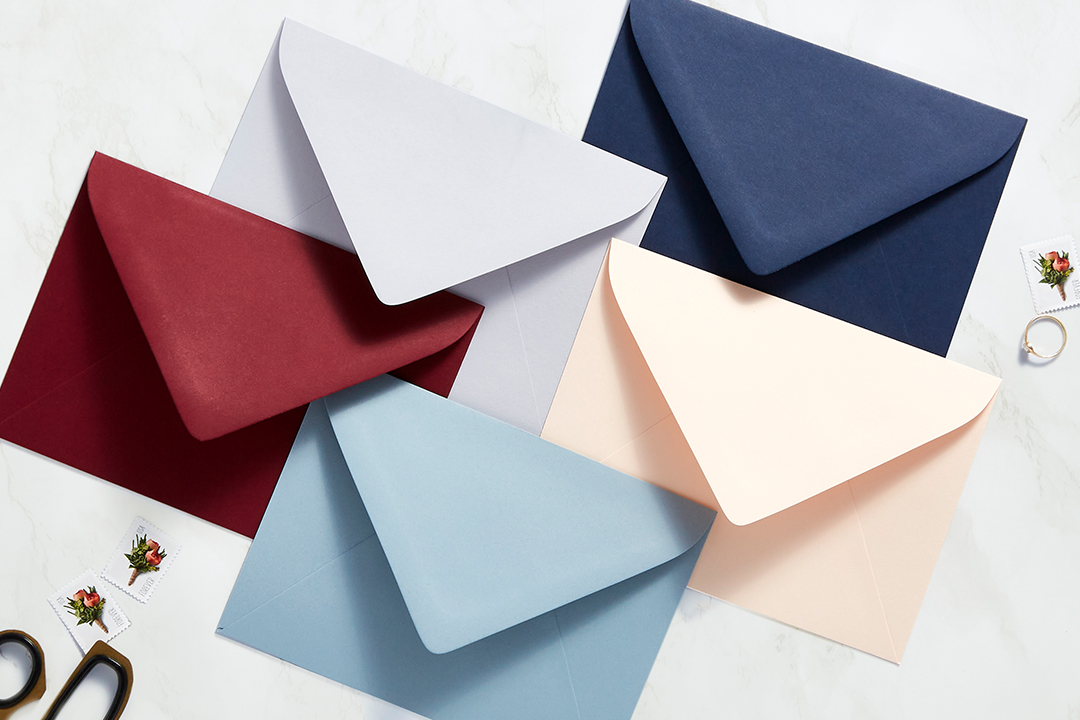
While it may seem like an afterthought amidst wedding planning, your wedding stationery really deserves some attention. In particular, your wedding invitation envelope. It delivers the first impression of your wedding’s (or wedding renewal's) style and personality to your guests. Whether subdued or statement-making, it’s a prelude to the invitation and the event itself. So without further ado, let’s celebrate this paper enclosure with everything you ever wanted to know about wedding invitation envelopes.
Envelope Size
If you’re designing custom wedding invitations, it all starts with the envelope! Wedding invitations should be designed from the outside in. Mailing envelopes come in standard sizes, and these sizes can even vary by manufacturer. So it’s best to select your wedding invitation envelope first, choose a coordinating paper, then move on to design, ink colors, and other fun stuff.
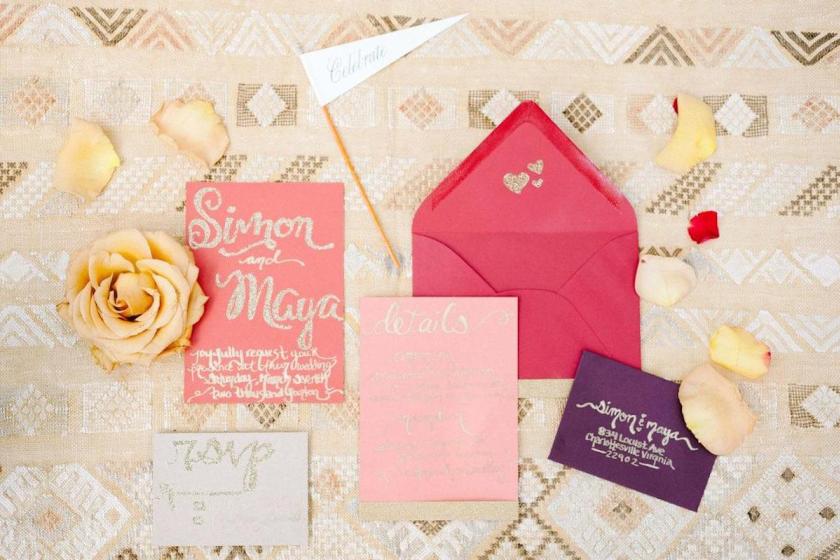
To Outer Envelope, or Not to Outer Envelope?
In olden times and Jane Austen novels, invitations were handwritten and delivered by a messenger on foot or horseback. The outer envelope would protect the contents from the elements. Upon delivery, the outer envelope was removed and the inner envelope was hand delivered on a silver tray (or something fancy like that) to the recipient. In modern times, you can use inner and outer envelopes to address the invitation to specific people. But you can also use a band of paper with the guests’ names written on it, or write their names directly on the single outer envelope. Double envelopes are becoming less popular because they’re not always necessary and are an additional expense.
Whether you have one or multiple envelopes, keep yourself sane and your guest list completely organized by utilizing Zola’s free Guest List Tool—you can upload your own spreadsheet, email guests directly so they can add their own addresses, even import the contact info from your phone to get your entire guest list loaded quickly and easily into the super handy, totally mobile-friendly tool. Then manage those RSVPs as they roll in in real time! Extra bonus: if you used a free wedding website from Zola, the RSVP feature on your site will sync up automatically with your guest list’s RSVP tracker.
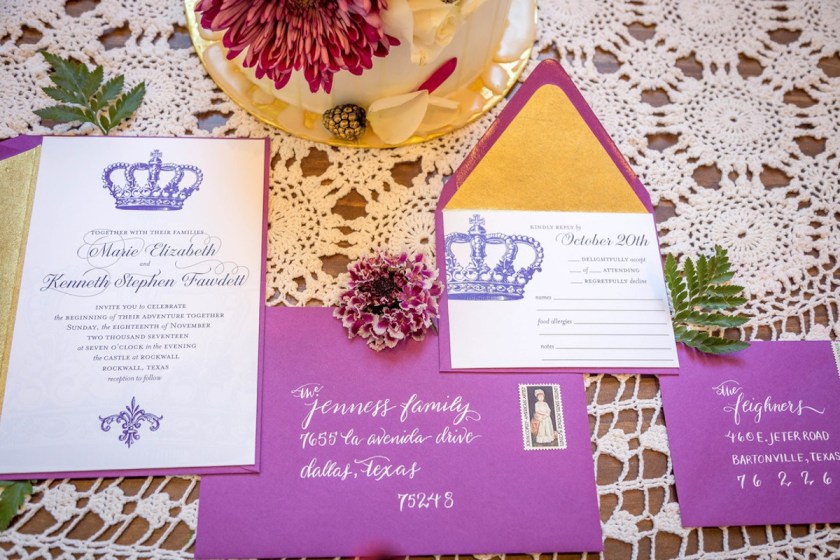
Return Address
Your return address (or the address of whomever is doing the inviting) typically goes on the back flap of the wedding invitation envelope. Have it printed on your envelopes when you print your invitations, or invest in a custom rubber stamp. This way, if any invitations go astray they’ll hopefully come back to you.
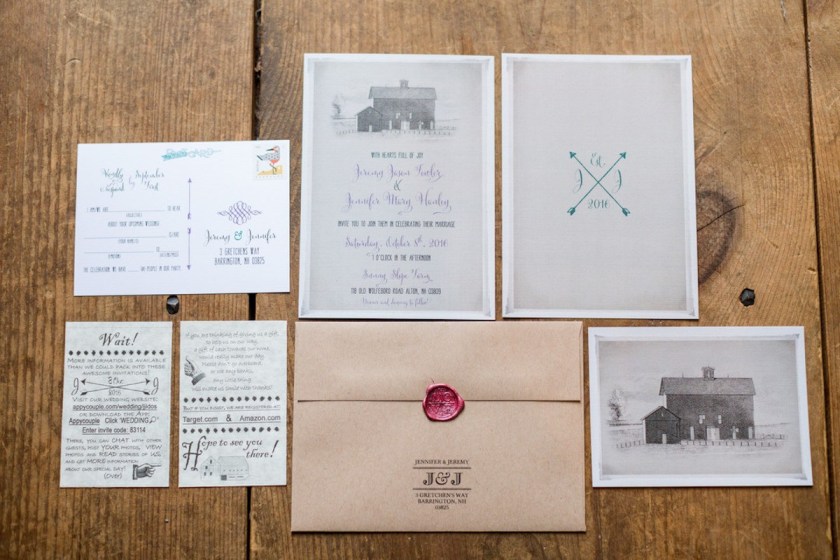
Addressing Wedding Invitations
Envelope addressing etiquette is just as important as your invitation wording, with just as many rules. When it comes to guest addressing, there are a handful of different categories to abide by, each with their own do's and don'ts. To make writing these out easier on you, we suggest sectioning off your guest list into the following categories, then going one-by-one with each's etiquette in mind. Doing so will ensure that you address everyone correctly and make recipient addressing an overall easier task.
Married Couples
When addressing married couples with the same last name, use the standard "Mr." and "Mrs." titles. Traditionally, addressing different-sex couples would mean spelling out the man's first and last name (e.g. "Mr. and Mrs. Sanchez"). However, more modern etiquette suggests using the first and last name of both guests (e.g. "Mr. Gabriel Sanchez and Mrs. Sofia Sanchez"). For a less formal approach that's more often seen on inner envelopes, you can also address married couples by last name only (e.g. "Mr. and Mrs. Sanchez" or "Mr. Sanchez and Mrs. Sanchez"). Avoid using first names only unless it's on inner envelopes and you've already addressed the couple fully on the outer envelope.
Married Couples With Different Last Names
Invitation suite etiquette suggests that, in the case of a married couple with different last names, you first address the person you're closest with. Use both first and last names for each individual addressed to display good etiquette and avoid any confusion as to who's invited (e.g. "Mrs. Emma Mackenzie and Mrs. Amelia Davis"). That being said, if you're equally close to both people, address them in alphabetical order by last name (e.g. "Mrs. Amelia Davis and Mrs. Emma Mackenzie"). Avoid using first or last names only (e.g. "Mrs. Mackenzie and Mrs. Davis" or "Emma and Amelia") unless it's on the inner envelope and you've already addressed the couple fully on the outer envelope.
Unmarried Couples
In the same way that both names are addressed for married couples, both names should be listed for unmarried couples. The difference being, each name is placed on its own line. Also like married couples, the first person addressed should be the one you're closest with. Unless you're equally acquainted, in which case names should be listed in alphabetical order by last name. Use both first and last names for each individual addressed to display good etiquette and avoid any confusion as to who's invited (e.g. "Mr. Alex Garcia, line break, Mr. Thomas Miller").
Families
When inviting a family—both parents and children—only the parents should be addressed on the outer envelope (e.g. "Mr. and Mrs. Smith" or "Mr. Jonathan Smith and Mrs. Amanda Smith"). However, for a less formal tone, you can address the entire family by last name (e.g. "The Smith Family"). In either case, both the parents' names and children's names should be listed on the inner envelope, as to specify who's all invited. Children's names should be listed on the line below their parents', with names listed in order of oldest to youngest (e.g. "Mr. and Mrs. Smith—line break—Piper and Bellamy").
Doctors and People With Distinguished Titles
Depending on the level of formality, doctors can be addressed by "Dr.," which is more casual, or "Doctor" which is more formal. When addressing an invitation to a doctor, the spouse with the professional title is listed first (e.g. "Dr. Rebecca Jones and Mr. Allen Jones"). That being said, if both spouses are doctors, follow the etiquette for married and unmarried couples with the same or different last names, addressing both individuals as "Dr./Doctor." If their last name is the same, you can also address them by their surname (e.g. "The Doctors Jones"). If not, list by acquaintanceship or alphabetically by last name (e.g. "Doctor Alison Hart and Doctor Drew Richardson").
The same etiquette applies to those with other distinguished titles, such as military personnel, reverends, etc. However, if both people have distinguished titles, it's seen as best to first address the person with the higher rank.
Envelope Liners
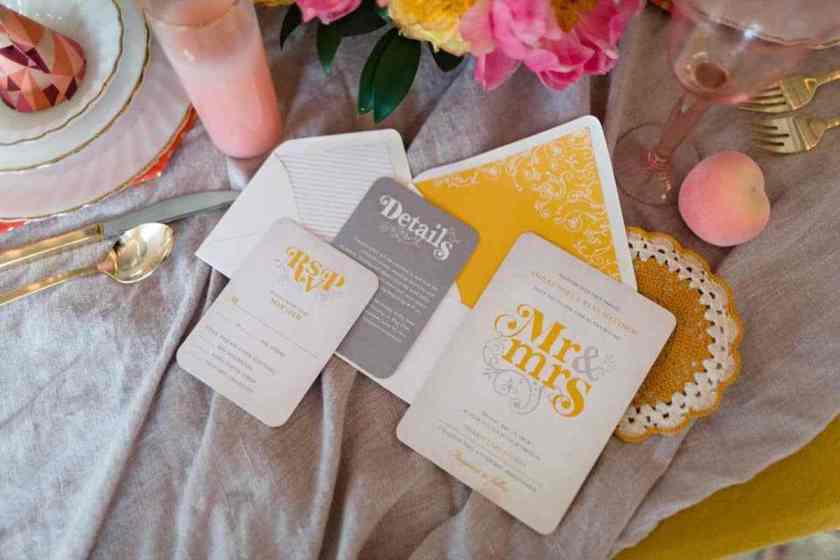
Did you know that you can find beautiful envelope liners right here at Zola? Once you pick the invites and paper designs that are right for you, add one of our many liner designs to your envelope drafts. It's the ultimate add-on for deluxe wedding envelopes.
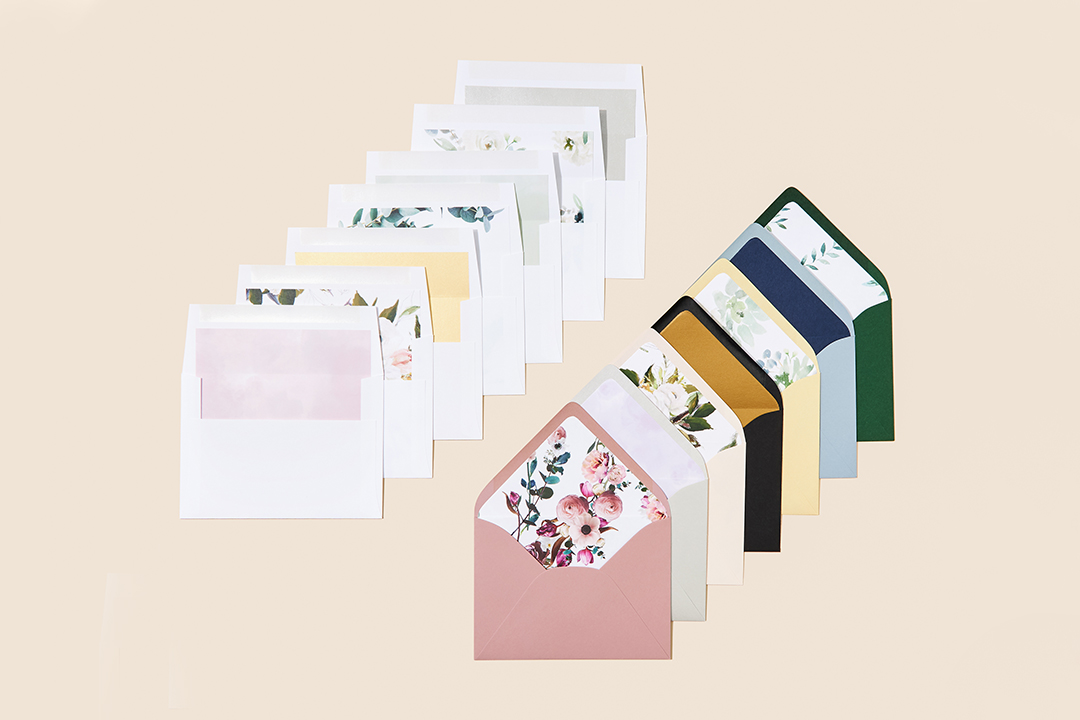
Calligraphy Vs. Printed Addresses
If you love the look of fancy hand-lettering and have room in your budget, definitely get in touch with a calligrapher. The most formal approach is to hand-letter your envelopes because it adds a personal, special touch to the invitation. If you are printing addresses on self-adhesive labels or on the envelope itself, however, pick a font that coordinates with your invitation’s typography or blends well with your outer envelope. If you are the DIY type and want to try your hand at, well, handwriting your envelopes, make yourself a template and grab a light table.
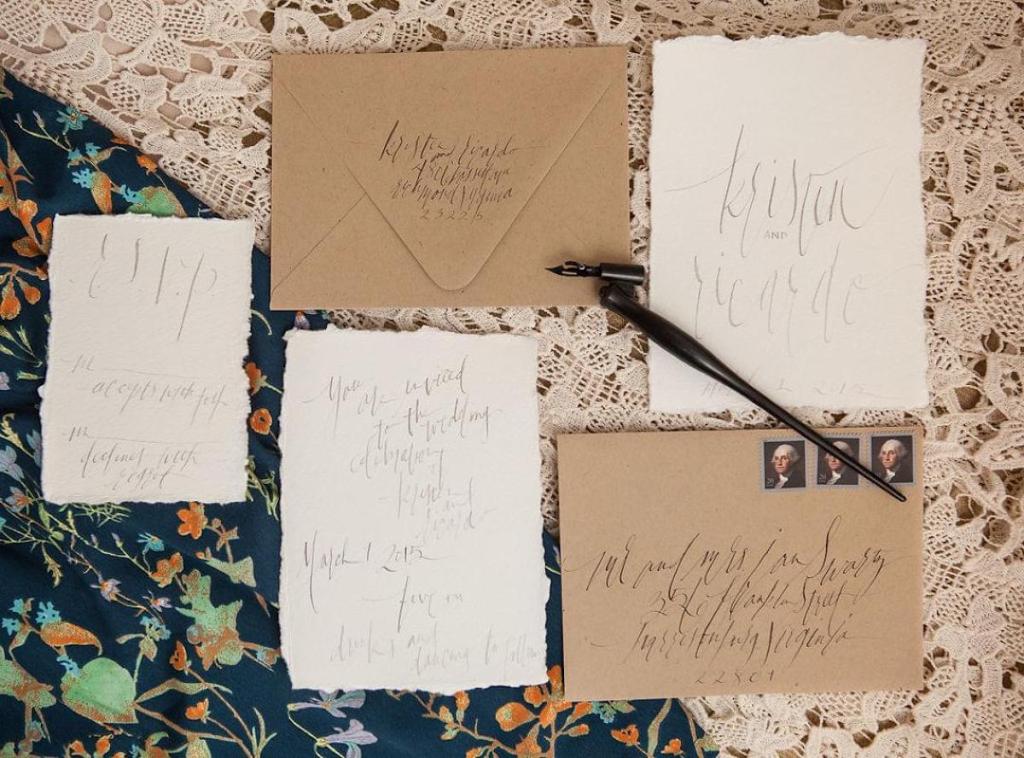
Double Check Everything
Measure twice, cut once. Make sure you have the correct spellings of your guests’ names and addresses before you begin addressing.
Postage
Don’t forget about postage when calculating your budget for invitations. You’ll need postage not only for your invitations, but for the RSVP response envelopes, should you chose to include paper RSVP cards (rather than have guests reply RSVP online).
Keep in mind that heavier and non-traditional sizes require more postage. Before you buy the stamps and begin sticking, prepare an wedding invitation envelope exactly how you’d like it sent and bring it to the post office to determine necessary postage.
A non-traditional postage stamp is a fun detail and is especially doable when sending out a smaller number of invites. Go traditional by exploring USPS’s collection of love-themed stamps, or why not tell a bit about the couple’s story by having the stamps reflect their personalities?
Another resource: Zazzle has a wide collection of stamps, including those specifically for RSVP or save the dates, but you can also make your own. Ebay has tons of options available as well, but you might have to do a bunch of digging to find ones that work well for your invites. Although it’s a tad obvious, let’s state it anyway: make sure they’re unused!
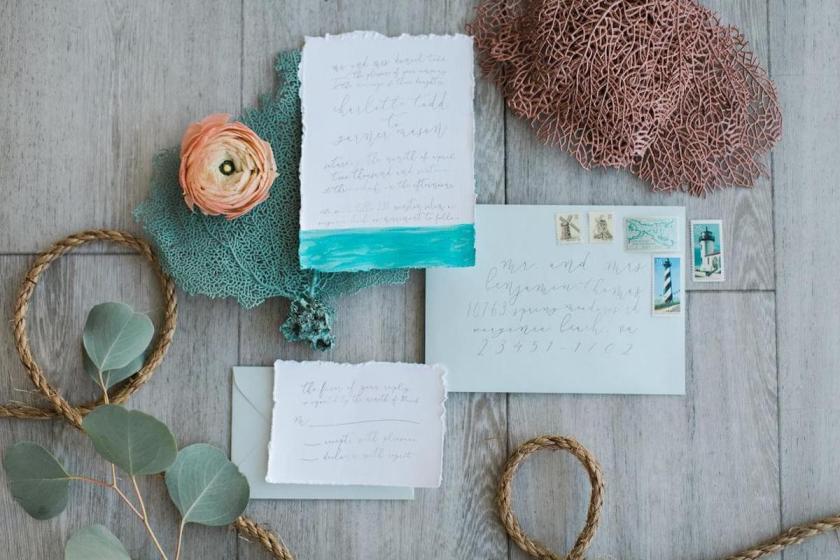
Hand-Canceling
After you mail something, the postal service puts the envelope through a machine where it sorts out the post and cancels the postage so it can’t be used again—that’s the city, date, and squiggly lines you’ve probably noticed appearing on top of the stamp in the left corner. Going through this machine, however, can tear, bend, and even mark up envelopes a little. It seems just silly to spend so much time and money on beautiful wedding invitations to have them arrive looking banged up. A way to alleviate this problem: ask the post office to hand-cancel your wedding invitations. They’ll cancel the envelopes with a round stamp over the postage, and your precious parcels will go through one less machine. This is great for those thick invites that have the most potential to get damaged in the mailing process.
For everyone who has horror stories about post office wait times (i.e., your classic first-world problem), be smart (and kind to your fellow mailers) and come in to get your invitations hand-canceled when the post office is slow.

Don’t Stress
At the risk of sounding like a broken record, check out the Guest List Tool on Zola Wedding (or, if you’re old-school, get your Google docs on) to get organized. See if you can get your envelopes in hand before the rest of your invitation order so you can start on the addressing. And don’t freak out about addressing etiquette: our Guest List tool will formally lay out all of your envelope information per guest, which you can then export in the exact format you need. Then either hand that list over to your calligrapher, or set aside some time to do the task—put on an old favorite movie and get to work!
Up next for you
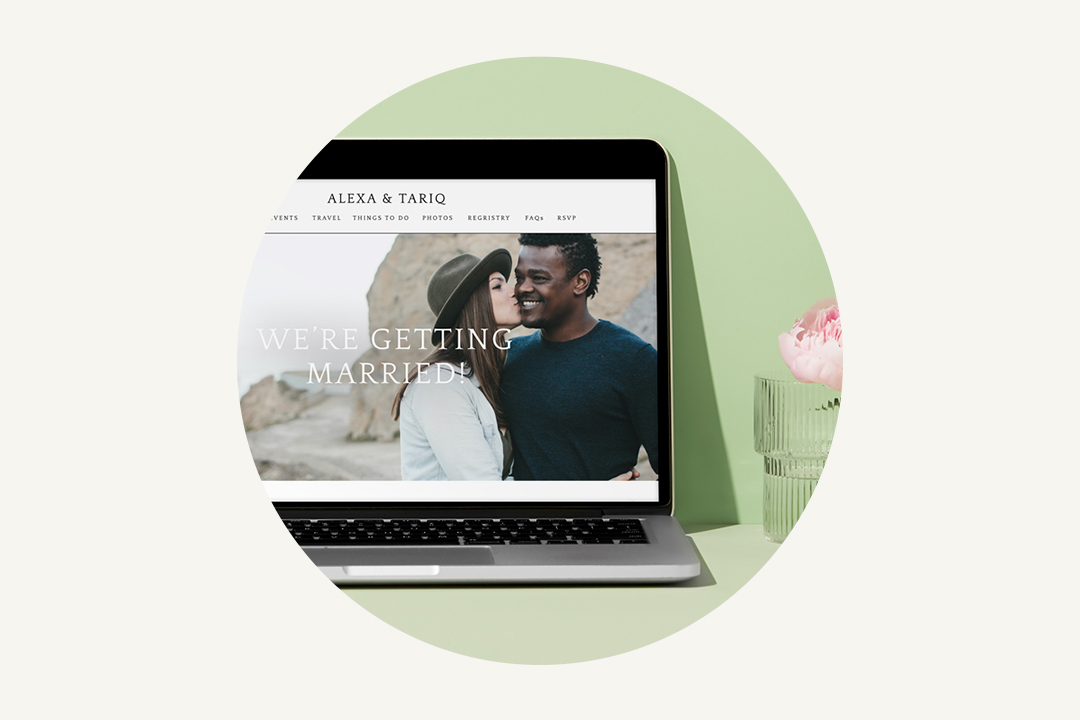
How to Build a Wedding Website: Guide + Tips
Inspiration
Create a beautiful, shareable free wedding website that will keep all your information in one place and make you and your SO's life easier.

A Guide to Invitation Enclosure Cards
Inspiration
Explore our guide to learn everything you need to know about enclosure cards.
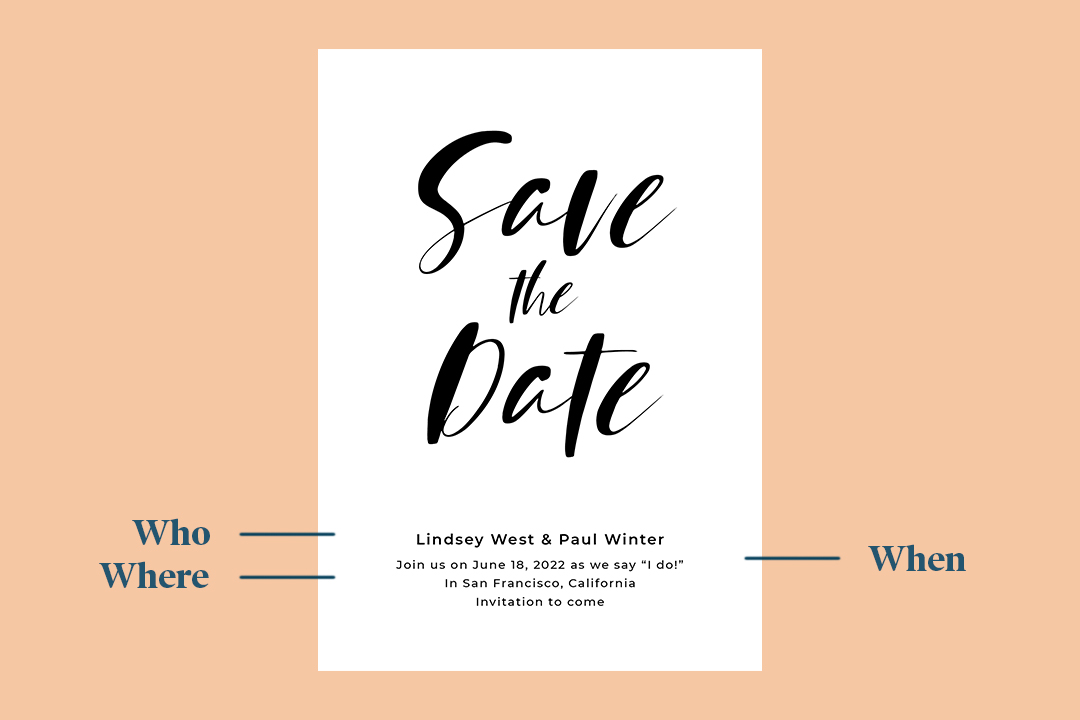
A Guide to Save The Dates
Inspiration
Save the dates add an extra touch of style and coordination to your wedding. Find out why and when you should send your save the dates with this complete guide.
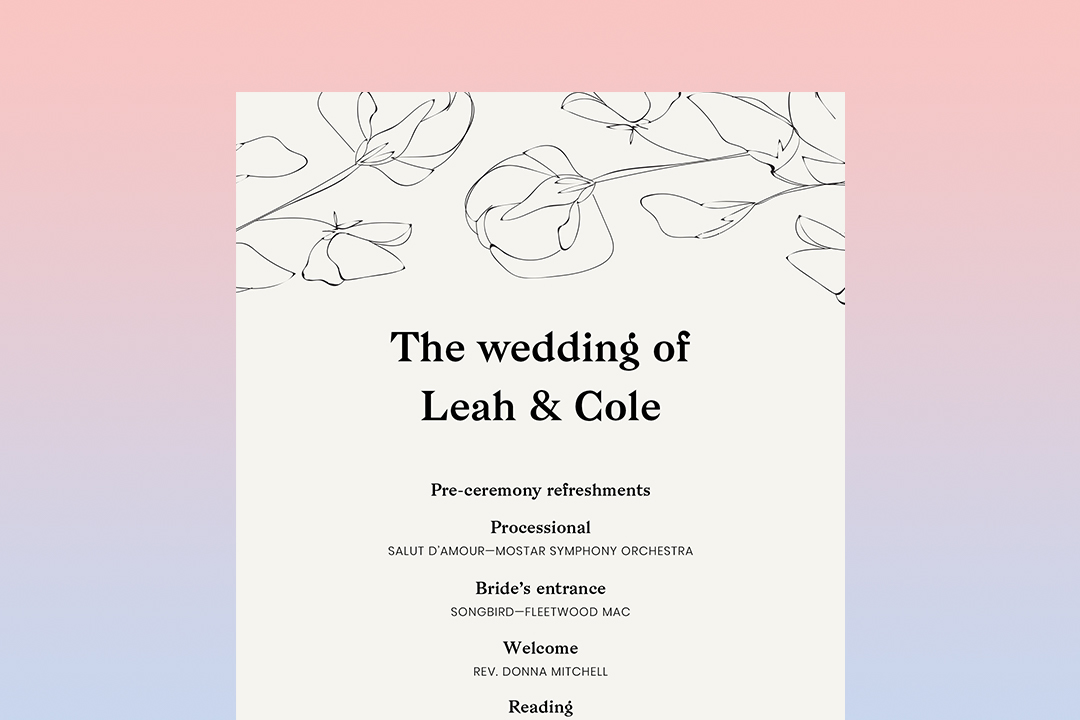
A Guide to Wedding Ceremony Programs
Inspiration
Wedding ceremony programs communicate valuable information to your guests about your ceremony service—find out all you need to know to choose, word, and personalize your wedding programs.

Wedding Invitation RSVP Cards: Wording & Etiquette
Inspiration
Master wedding RSVP card wording and etiquette. Craft the perfect invitations with our guide, ensuring a smooth and organized guest response.
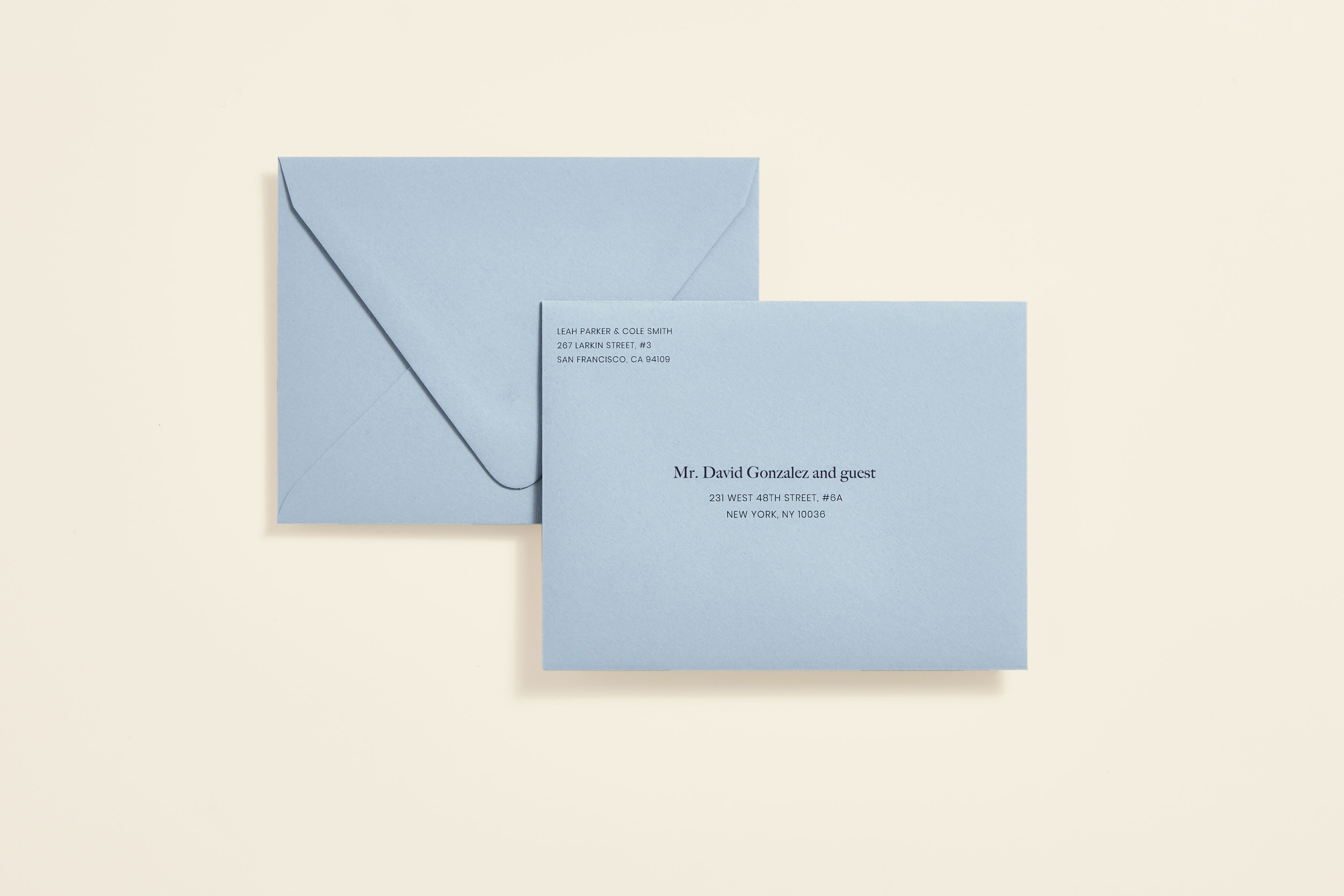
How to Address Wedding Invitations: Etiquette & Examples
How-To
Master the art of addressing wedding invitations with proper etiquette. Learn formal and modern approaches to create elegant and inviting cards.
Featured

11 Dos and Don'ts for Your Wedding Website
Inspiration
Your wedding website provides your wedding guests with all the necessary info about your wedding. Here's exactly what to include and what to skip on your wedding website.
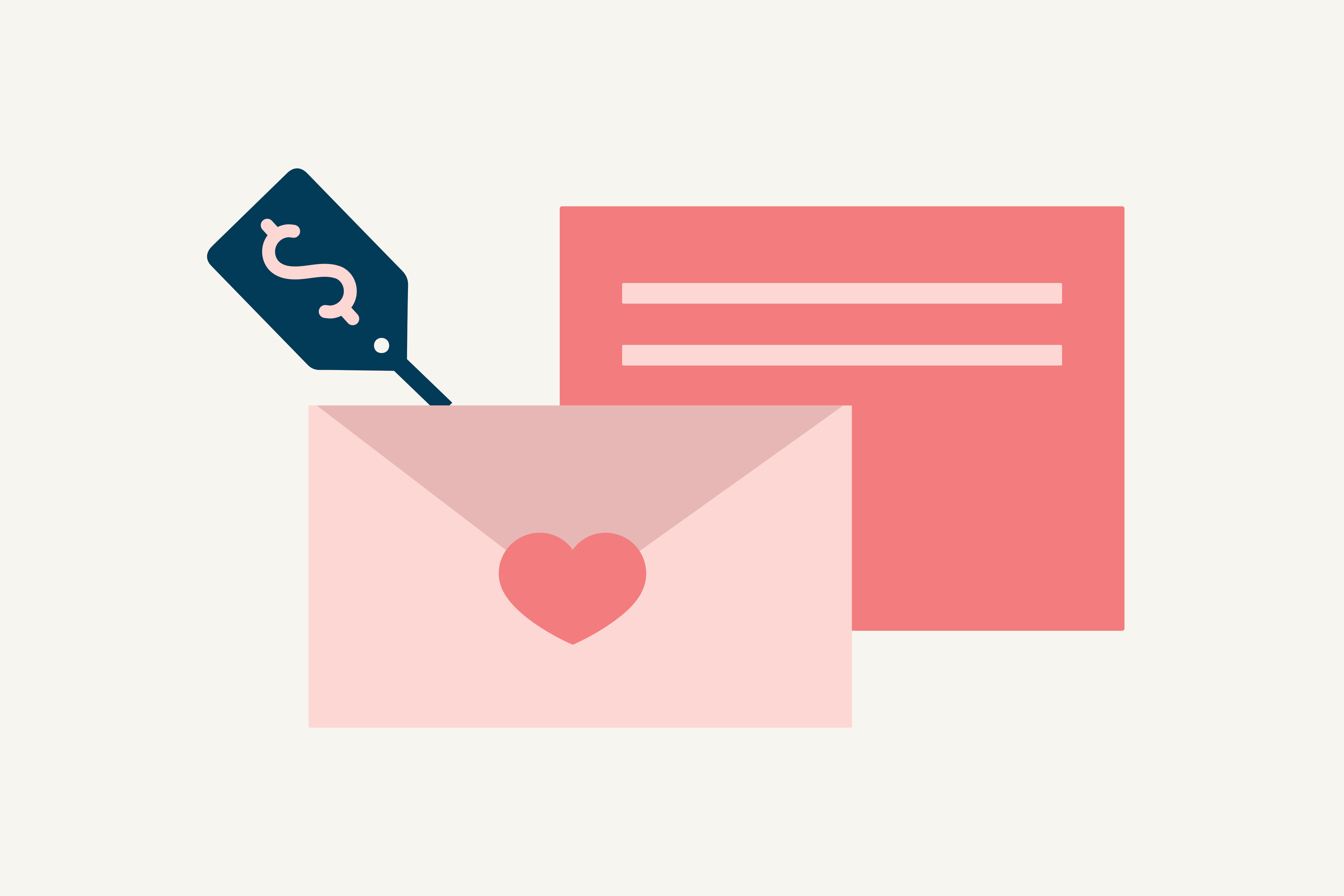
How Much Do Wedding Invitations Cost on Average?
Inspiration
Find average wedding invitation costs with our pricing breakdown guide. Explore pricing factors to consider including paper types, printing methods, and more.
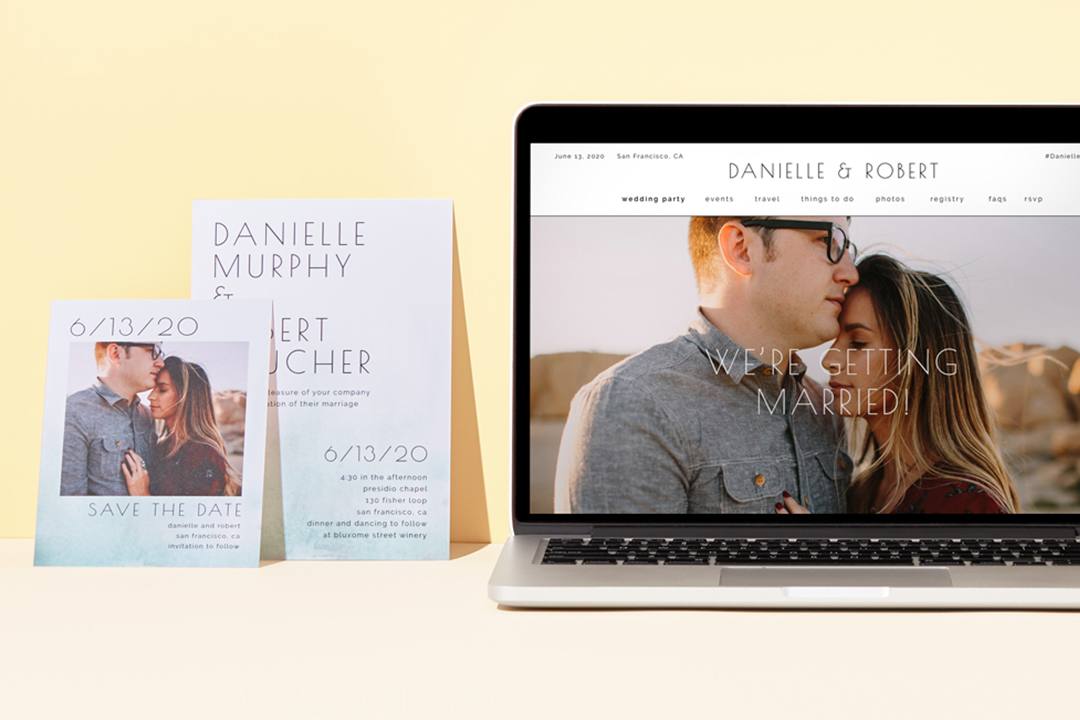
How to Include Your Wedding Website on Your Invitation
How-To
Wondering how to share your wedding website with guests? Explore etiquette tips for how to share your wedding website on an invitation.
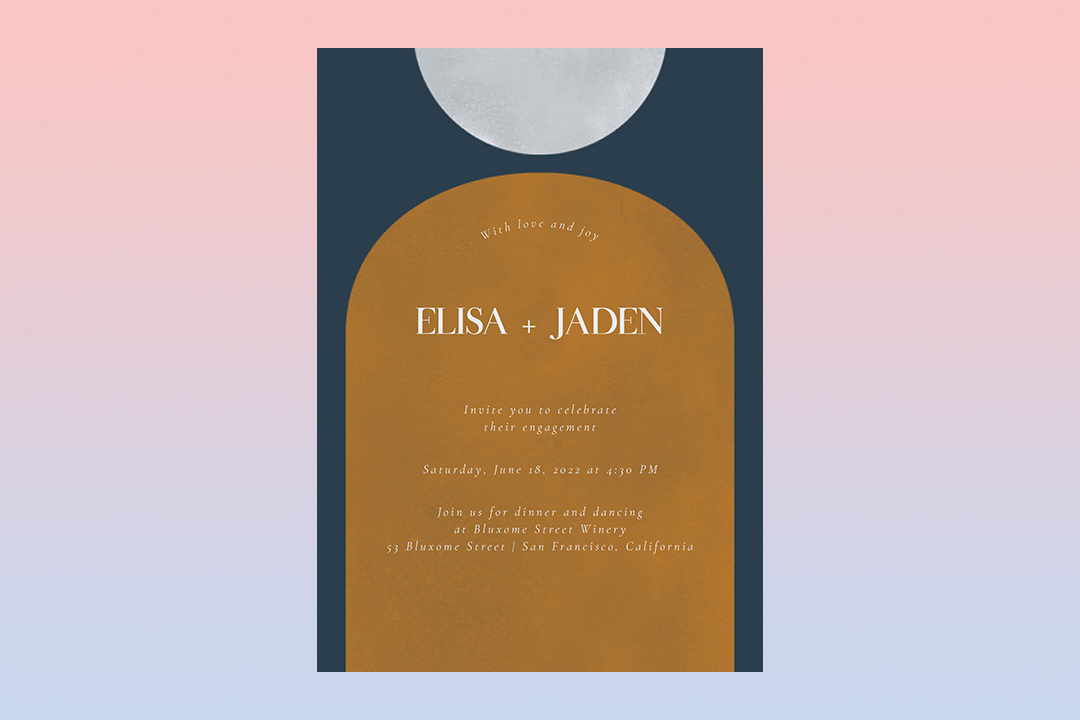
8 of The Best Engagement Party Invitation Ideas + Tips
Inspiration
If you’re planning an engagement party, your guests need to know the details of the celebration. Check out these engagement party invite ideas.
- Expert advice/
- Invites & paper/
- Invitations/
- Wedding Invitations: A Guide to Envelopes
Find even more wedding ideas, inspo, tips, and tricks
We’ve got wedding planning advice on everything from save the dates to wedding cakes.
